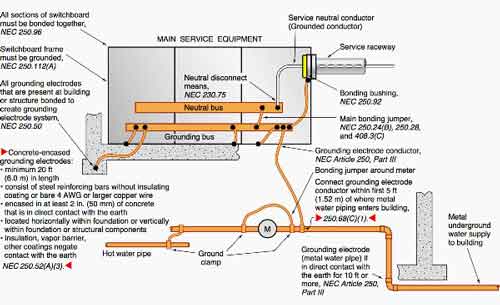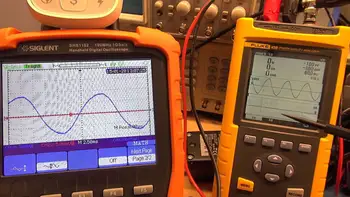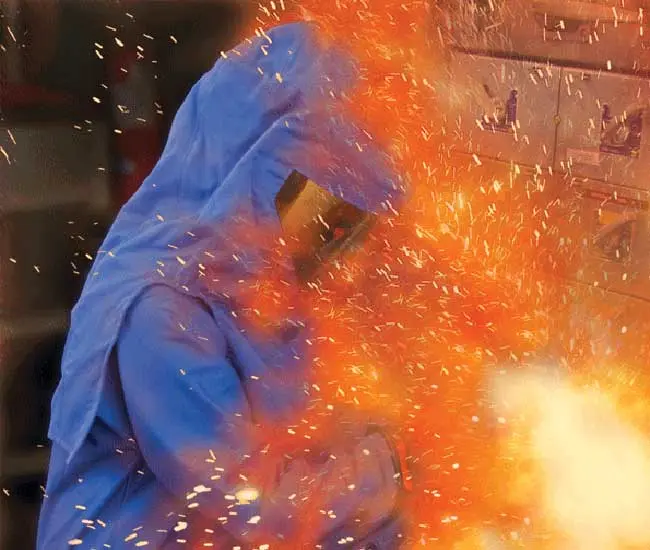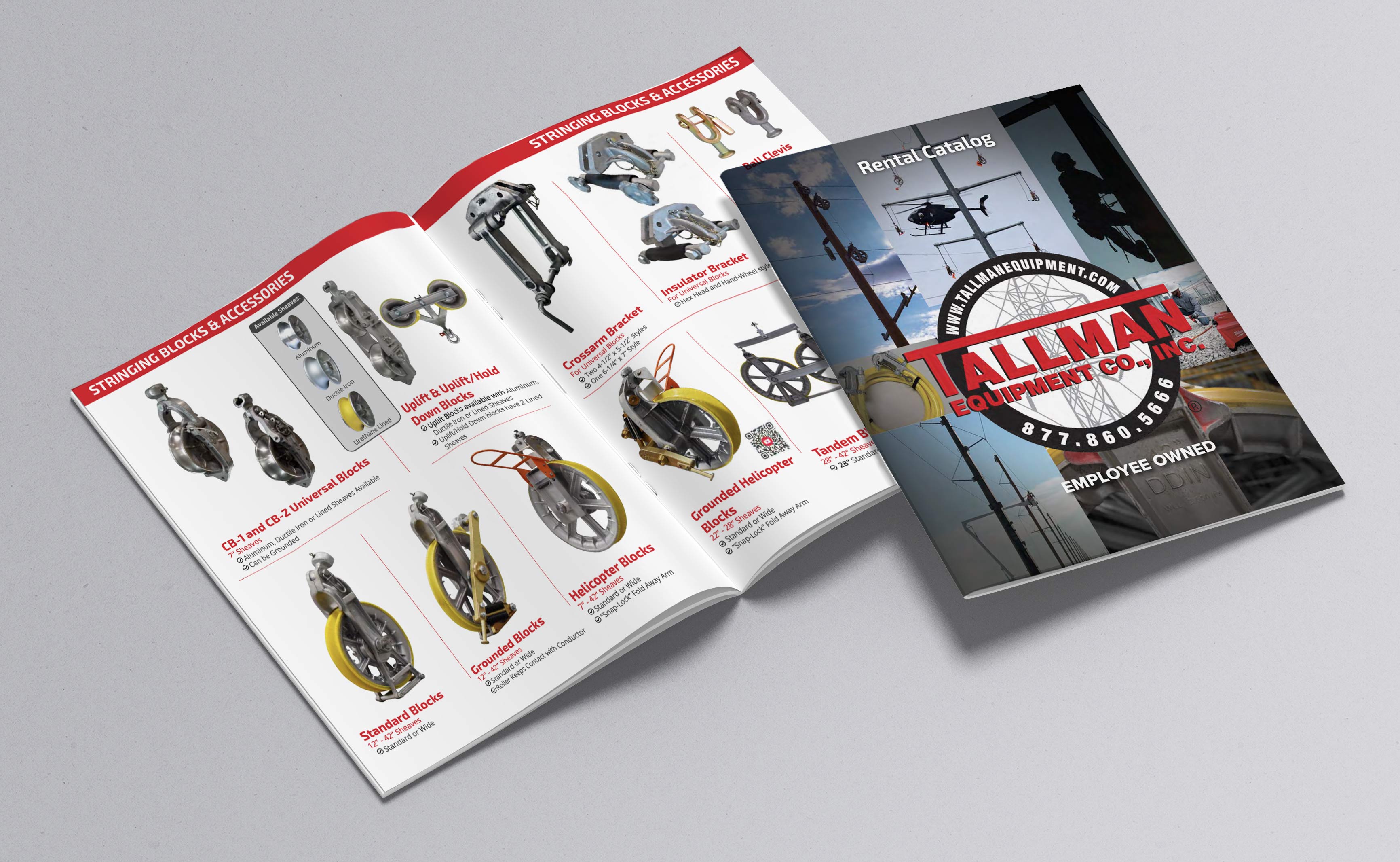NEC 250.122 Explained

Power Quality Analysis Training
Our customized live online or in‑person group training can be delivered to your staff at your location.

- Live Online
- 12 hours Instructor-led
- Group Training Available
Download Our NFPA 70E Fact Sheet – 2024 Electrical Safety Edition

- Understand how NFPA 70E works with NEC and NFPA 70B standards
- Clarify the shared responsibility between employers and employees
- Learn how NFPA 70E supports OSHA compliance
NEC 250.122 specifies the minimum size requirements for equipment grounding conductors based on the ratings of overcurrent protection devices. It ensures electrical safety by preventing overheating during faults, maintaining continuity, and protecting personnel and equipment from electrical shock hazards.
What is NEC 250.122?
NEC 250.122 is a critical section of the National Electrical Code (NEC) that outlines the minimum size requirements for equipment grounding conductors. It supports safe system operation and code compliance. The Standard:
✅ Defines grounding conductor size based on overcurrent protection device rating.
✅ Ensures safe fault current path and shock protection
✅ Promotes grounding compliance across electrical installations
This standard is vital in ensuring power quality, as it determines the proper conductor size based on the rating of the overcurrent protection device. By following the guidelines in the standard electricians and engineers can prevent electrical hazards, including overheating, equipment failure, and potential fire risks. The proper application of this standard is essential in both residential and commercial installations, as it safeguards systems from grounding issues and ensures compliance with safety regulations.
Grounding and Bonding and the NEC 250 Training
Electrical Grounding and the CE Code Training
Request a Free Power Quality Training Quotation
Understanding NEC 250.122: Equipment Grounding Conductor Sizing
The National Electric Code (NEC), specifically NEC 250.122, provides essential guidelines for determining the proper size of equipment grounding conductors (EGC) in electrical installations. The grounding conductors play a crucial role in maintaining safety by safely directing fault currents back to the source, thereby protecting both personnel and equipment. In this article, we will examine what the standard encompasses, how to determine the correct grounding conductor size, and how factors such as voltage drop and circuit size influence this calculation.
NEC Table 250.122 – Quick Reference
| Overcurrent Device Rating (Amps) | Minimum Copper EGC Size (AWG or kcmil) |
|---|---|
| 15–20 | 14–12 |
| 60 | 10 |
| 100 | 8 |
| 200 | 6 |
| 400 | 3 |
| 800 | 1/0 |
| 1200 | 3/0 |
Subsection Highlights: NEC 250.122(B), (C), (D), and (F)
In addition to the base rule in 250.122(A), several key subsections affect grounding conductor sizing in real-world installations:
-
250.122(B) – Upsizing for Larger Conductors:
If ungrounded circuit conductors are increased in size for voltage drop or design reasons (excluding ambient temperature or conduit fill), the EGC must also be increased proportionally in circular mil area. -
250.122(C) – Multiple Circuits in One Raceway or Cable Tray:
When multiple circuits share the same raceway, a single EGC can be used, provided it’s sized for the largest overcurrent device protecting the circuits. -
250.122(D) – Motor Circuits:
For motors, EGC sizing is based on the branch circuit protective device, not the motor’s full-load current. This distinction prevents undersizing in motor installations with high inrush protection. -
250.122(F) – Parallel Conductors:
In systems with conductors run in parallel, a separate EGC is required in each parallel run, and each must be sized according to the standard.
Sample Calculation: Upsizing and Proportional EGC Sizing
Scenario: A feeder is protected by a 200A circuit breaker and normally would use 3/0 copper conductors. Due to voltage drop over a long run, the conductors are upsized to 350 kcmil.
Sign Up for Electricity Forum’s Power Quality Newsletter
Stay informed with our FREE Power Quality Newsletter — get the latest news, breakthrough technologies, and expert insights, delivered straight to your inbox.
Step 1 – Base EGC size from NEC Table 250.122:
For 200A, the required copper EGC is 6 AWG (26,240 circular mils).
Step 2 – Upsizing ratio:
-
3/0 AWG = 167,800 cmil
-
350 kcmil = 350,000 cmil
-
Ratio = 350,000 / 167,800 ≈ 2.09
Step 3 – Multiply EGC size by same ratio:
-
6 AWG = 26,240 cmil
-
26,240 × 2.09 ≈ 54,841 cmil
-
Closest standard conductor: 4 AWG (62,420 cmil)
Result: Use 4 AWG copper as the upsized EGC to remain compliant with the standard.
NEC 2020/2023 Update: Exception for Qualified Person Sizing
The 2020 NEC introduced an exception to 250.122(B). If conductors are upsized solely to accommodate voltage drop, and the EGC is sized by a qualified person, proportional upsizing is not required.
-
Definition – Qualified Person (NEC Article 100):
“One who has skills and knowledge related to the construction and operation of the electrical equipment and has received safety training to recognize and avoid the hazards involved.”
This exception acknowledges professional judgment in installations designed by engineers or similarly trained individuals. However, documentation and authority must be clearly provided if the EGC is not upsized.
Defined Term: What Is a Qualified Person?
NEC Article 100 and Section 250.4(A)(5) define a qualified person as someone trained and competent in electrical safety, installation, and system design. They must have knowledge and experience that allows them to identify hazards and assess code requirements responsibly. In practical terms, this often means a licensed electrical engineer or master electrician.
This designation is important under the standard when electing not to upsize the EGC during a voltage drop correction.
Frequently Asked Questions
What Does 250.122 Cover in Terms of Equipment Grounding Conductor Sizing?
The standard specifies the minimum size of the equipment grounding conductor required for a circuit. The size of the grounding conductor is based on the rating of the overcurrent protection device (such as a circuit breaker) that is used to protect the circuit. Table 250.122 in the NEC provides detailed guidelines on the minimum size for these conductors. These sizes are determined based on the size of the overcurrent protective device and ensure the conductors can handle fault currents safely.
The primary goal of the standard is to ensure that the equipment grounding conductors (EGC) are appropriately sized to carry any fault current back to the source, preventing electric shock and reducing the risk of electrical fires. It covers both the minimum size for new installations and the requirements for when the conductors need to be increased in size due to various factors.
How Do I Calculate the Correct Size for an Equipment Grounding Conductor?
Calculating the correct equipment grounding conductor size begins with identifying the rating of the overcurrent protective device. For example, if you are using a circuit breaker rated for 100 amps, you will consult NEC Table 250.122, which specifies that for a 100-amp device, the minimum conductor size would be No. 8 copper or No. 6 aluminum. The size of the EGC must correspond with the overcurrent protection to ensure that it can safely carry fault currents without overheating.
However, in certain circumstances, the conductor size must be adjusted. For instance, if the conductors carrying current are upsized to accommodate voltage drop or for long runs, the EGC may also need to be increased in size according to the guidelines in 250.122(B). In some cases, the conductor must be upsized due to system adjustments. When upsizing for long runs or voltage drop, the apparent power and load characteristics may affect the sizing of the EGC as well.
What Happens If the Equipment Grounding Conductor Is Undersized?
Using an undersized equipment grounding conductor can have serious safety implications. If a fault occurs and the conductor cannot effectively carry the fault current back to the source, the risk of electric shock increases significantly. The conductor may overheat, leading to insulation failure, potential fire hazards, and damage to equipment. Therefore, it is crucial to ensure that the conductor meets the minimum size requirements set forth by the National Electric Code.
Electricity Today T&D Magazine Subscribe for FREE

- Timely insights from industry experts
- Practical solutions T&D engineers
- Free access to every issue
This makes proper grounding system design essential. Compliance with the standard also helps ensure systems pass inspection and avoid costly rewiring.
Does 250.122 Apply to Both Residential and Commercial Installations?
Yes, the standard applies to both residential and commercial installations. Whether for a single-family home, a neutral grounding resistor in an industrial facility, or a ground grid in a commercial building, the same principles of EGC sizing apply.
The standard specifies the minimum size of the equipment grounding conductor required for a circuit. The size of the grounding conductor is based on the rating of the overcurrent protection device (such as a circuit breaker) that is used to protect the circuit. Table 250.122 in the NEC provides detailed guidelines on the minimum size for these conductors. These sizes are determined based on the size of the overcurrent protective device and ensure the conductors can handle fault currents safely.
The primary goal of the standard is to ensure that the EGC is appropriately sized to carry any fault current back to the source, preventing electric shock and reducing the risk of electrical fires. It complements other grounding and bonding standards and includes guidelines for both new installations and when the conductor needs to be increased in size due to specific conditions.
How Do Adjustments for Voltage Drop Affect Equipment Grounding Conductor Sizing?
Voltage drop occurs when the voltage decreases as electrical current travels through a conductor. This is more pronounced over long distances. According to the 2017 NEC, if the carrying conductors of a circuit need to be upsized to reduce voltage drop, the equipment grounding conductors (EGC) may also need to be upsized to match. This adjustment ensures that the grounding conductor is adequate to handle fault currents, even when the current-carrying conductors are larger than standard. Use how to check if an area is grounded to verify effectiveness in the field.
The NEC requires that the conductor size be increased proportionally to the current-carrying capacity of the conductor. For example, if you increase the size of the circuit conductors due to a long run, you should check NEC Table 250.122 to determine the correct proportion for upsizing the grounding conductor to ensure compliance with the code.
The standard is a crucial part of the National Electrical Code, providing clear guidelines for sizing equipment grounding conductors in various electrical systems. Grounding is essential for safety, as it prevents electrical shocks, fires, and damage to sensitive equipment. By ensuring that the grounding conductors are properly sized based on the size of the overcurrent protective device, and adjusting for factors such as voltage drop, you can ensure compliance with the 2017 NEC and maintain a safe and effective electrical system.
Understanding and following the guidelines outlined in the standard is critical for both residential and commercial installations, as it ensures the integrity and safety of the overall electrical system. Always consult the code, refer to NEC Table 250.122, and, if necessary, seek professional advice to ensure your installation is both safe and compliant.
Related Pages











